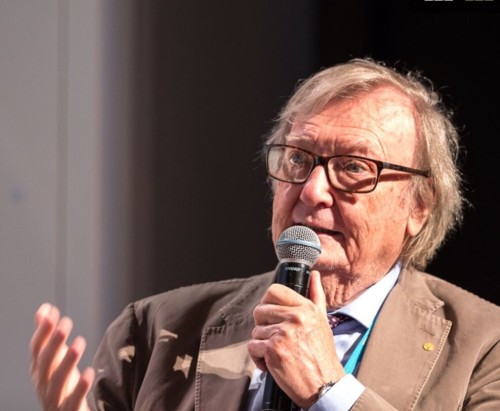
Good craic: Carlo Rubbia wants to have a crack at methane. (Courtesy: Lindau Meeting)
By Hamish Johnston at the Lindau Nobel Laureate Meeting in Germany
It’s my second day here at the 66th Lindau Nobel Laureate Meeting, and it has been a busy one so far.
I have just been chatting with Carlo Rubbia, who shared the 1984 Nobel Prize for Physics for the discovery of the W and Z particles.
Rubbia gave a fantastic talk yesterday about future sources of energy and he was eager to expand on this topic. In particular, he told me about a new technology he has been working on to produce energy from natural gas without releasing any carbon dioxide – a technique called “methane cracking“. While this sounds like a fantastic solution to climate change, at least in the short term, he admits there are lots of technical challenges to overcome.
I also asked Rubbia about what accelerator technology he is backing for a replacement for the Large Hadron Collider. He admitted that building a huge collider to explore energies much higher than the LHC would be extremely expensive and that there isn’t much money sloshing around the world at the moment – except possibly in China.
As a result, Rubbia is backing a precision “Higgs factory” that will produce lots of Higgs particles. Unlike the LHC, which produces a huge background of other particles that must be discarded, the factory would make Higgs under very clean conditions so that their properties can be studied in great detail.
Rubbia says this could be best done by building a muon–antimuon collider that would operate at about 60 GeV. This is much lower energy than the LHC and he says it could be built with resources available today.
Prof. Rubbia,the Nobel Laureate in physics, spent quite a few years with a group of physicists, to calculate and set up a proton-accelerator based subcritical Thorium assembly, but it reached no where. Now, let see as to what happens to the “methane cracking” project in terms of the practical geological and ecological effects. As to the Higgs Factory, the Chinese are already thinking about its need and feasibility.